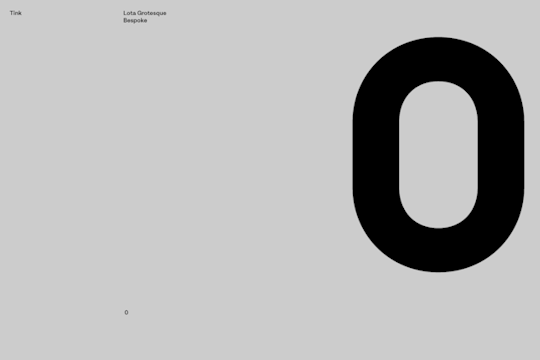Text
Typography I - Project 3
Modern Typographic Grids
There are many examples of modern grids in books today, especially in books about art. I found plenty of examples in books but found one in particular that was very interesting and versatile.I also designed a cover for the book along with a title page and colophon using a modern grid.The book I used for a modern grid layout example is “Who is the Subject?” by Nilbar Gures and it is an example of a modern grid, the designer used rows and columns to unify the many different layouts throughout the book while maintaining its variety.




2 notes
·
View notes
Text
Typography I - Project 2
The Crystal Goblet Booklet Project
My research for this project included looking into many traditional typographic layout examples. When I began this project I was interested in the use of glyphs as design elements but as I carried and on poured over the actual text of The Crystal Goblet I became more interested in how I could make as simple and clean as possible. For the final I couldn't help but utilize some of the beautiful glyphs Adobe Caslon has in the cover.




Thumbnails:






Final Book Design:





0 notes
Text
Design Writing: Lateral Thinking
In the book “Lateral Thinking” by Edward De Bono the author argues there is an alternative way of thinking of ideas that is more productive than how people were originally taught. He begins by defining both lateral and vertical thinking, both of which are terms he coined. Vertical thinking is analytical, structured and only includes what is considered relevant. De Bono introduces the new idea that this lethargic way of thinking is merely the baseline most people are taught to function at. He argues that in order to optimize creative thinking you must think laterally. Lateral thinking is a more creative approach to solving problems, it uses reasoning that is not always immediately obvious. The concept of lateral thinking is very useful in design as there are countless problems which we aim to solve that we may find the answers to in some unconventional ways.
Implementing the process of lateral thinking can aide in the design process at almost every point, from beginning to end. During ideation is perhaps the most vital point in solving design challenges in which one should use lateral thinking. De Bono describes an exercise that he calls random stimulation. This is a way of brainstorming in which participants “depart from usual patterns” and instead allow any idea. In this exercise it is noted, there is absolutely no room for evaluating any ideas, the reasoning behind that rule is that the evaluation of rough early ideas will likely lead to discounting some ideas that seem unreasonable at the time of ideation but could play a role later in the process and actually prove very helpful. An example of this is keeping and continuing to revisit preliminary sketches and word lists for a design problem. Just like it is important to take a break from a project periodically, so that you may return to it with fresh eyes and a clear head, it is important to do the same with brainstorming notes and rough sketches. Another example of the exercises De Bono recommends for creative productivity is challenging the problem which you are trying to solve. Not in an aggressive way, rather just asking yourself “why?” when addressing the problem. He even includes ways to challenge concepts that are not necessarily problematic, this way you can accustom yourself to challenging your own solutions to creative problems. By asking “Why?” you are able to understand what is necessary and what is not needed to fix an issue.
Lateral thinking and creative problem solving are very useful to the design process, and if used effectively can yield much better results than problem solving without these tools. Edward De Bono’s methods are catered to creative thinking and solving design problems. This makes them integrate seamlessly with the design process.
Bono, Edward De. Lateral Thinking: Creativity Step by Step. Perennial Library, 1970.
4 notes
·
View notes
Text
A Method to Our Madness
The IDEO methodology:
1. Understand…
the market, the client, the technology, and the perceived constraints on the problem. Later in a project, we often challenge those constraints, but it’s important to understand current perceptions.
2. Observe and research…
real people in real-life situations to find out what makes them tick: what confuses them, and what they like, what they hate, where they have latent needs not addressed by current products and services.
3. Visualize…
new-to-the-world concepts and the customers who will use them. Some people think of this step as predicting the future, and it is probably the most brainstorming-intensive phase of the process.
4) Evaluate and refine…
the prototypes in series of quick iterations.
5) Implement…
the new concept for commercialization.
16 notes
·
View notes
Photo


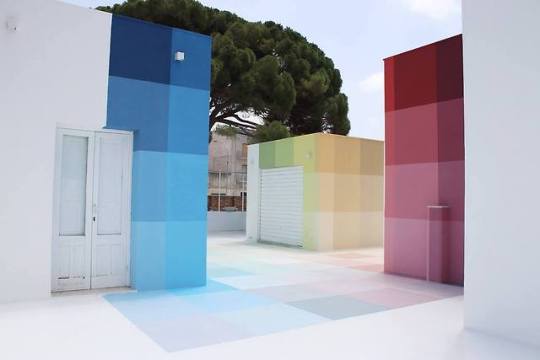


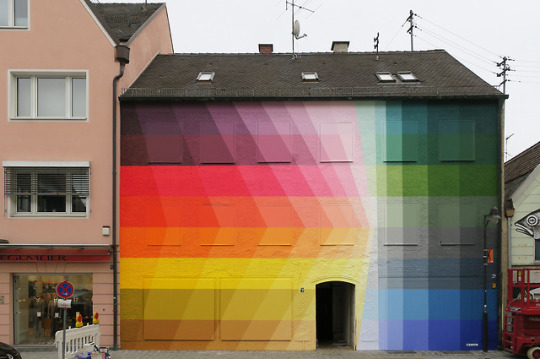

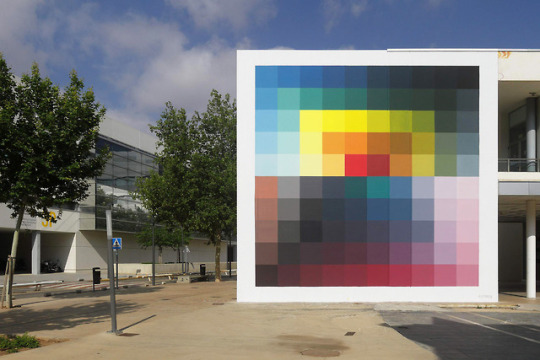

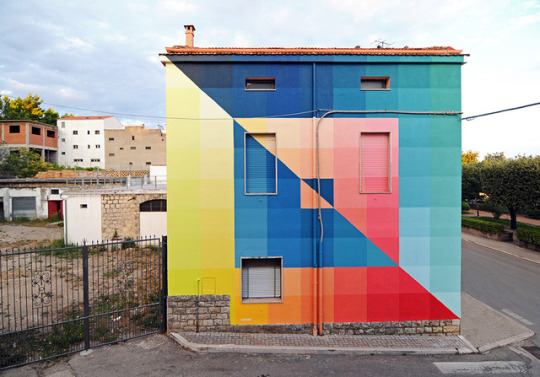
The Art of Alberonero
Alberonero was born in Lodi and lives in Milan. A graduate of the Polytechnic of Milan in the course of Interior Design, Alberonero works with minimal, essential and synthetic forms, reducing the elements of visual language to minimum terms. The inspiration comes from the architectural space and the search for sensations that the latter can transmit once redesigned. By resetting the shape and using the square as a means of pure expression of the single color, the color stands as a central element of the work. Each color is able to create a new and different feeling with respect to the context and based on their arrangement, geometry and interaction generate different possibilities of sensorial transmission in urban and non-urban space.
Here is a sample of his work, identified from the top:
86+73 (first three images created for Sicily’s Periferica Festival)
5 x 5
Arno
Würfl
Due in Uno
Mañana
Light up
Two surfaces and four intersection
4K notes
·
View notes
Photo









Brand Identity for Brew Your Mind by Classmate Studio
“Brand and visual identity design for Brew Your Mind, Hungary’s top craft beer brewery. The main visuals based on the concept of impossible 3D forms and optical illusions, which came from their choice of brand name. That refers to the “blow your mind” saying as an effect, that they want to achieve with their top quality service and atmospheric beers.”
Classmate Studio is a designer team based in Hungary and Finland. Their main fields are brand identities and editorial design, influenced by modern graphic design principles. Their ultimate mission is to help brands achieve their goals.
T D B: instagram • twitter • facebook • newsletter • pinterest
293 notes
·
View notes
Photo






Brand Identity for UDO by Nikos Georgopoulos
“UDO was seeking a new logo and identity that could help increase its brand visibility within a highly competitive landscape. Invoking algorithmic architectural philosophy, we experimented with the fundamental parameters of the letterforms and created a bespoke and customised logotype that simultaneously creates a certain atmosphere for the brand and at the same time references its design process and therefore, its uniqueness.”
Nikos Georgopoulos is an award-winning graphic designer and art director based in London. Described by London College of Fashion’s Creative Director as ‘sensitive, considered and essentially poetic’, his work spans across graphic identities, exhibitions, publications and websites for the fields of fashion, culture and architecture.
T D B: instagram • twitter • facebook • newsletter • pinterest
255 notes
·
View notes









